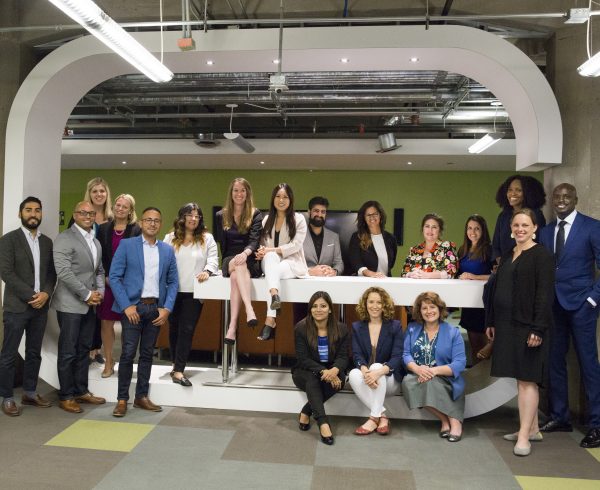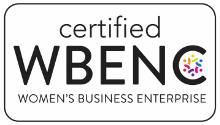Even as Derek Chauvin was found guilty by a jury this April, the trial of the former police officer charged with the murder of George Floyd reopened the deep emotional wounds felt following Floyd’s death last summer. And in the wake of increased violence against Asian Americans, the nation faces more thorny issues centered around systemic racism, inequality and diversity hiring.
The dialogue has expanded to the world of work. Companies are under scrutiny for how they are dealing with these topics. Beyond a black Instagram square, how can your company show a true and deep commitment to diversity? Are you all talk and no walk?
Investigate Implicit Bias
If you aren’t already doing so, a good place to start is by examining your organization’s existing diversity, equity and inclusion (DE&I) efforts. Question whether or not your DE&I initiatives are really making a meaningful and measurable impact.
While many organizations profess to value diversity, sometimes well-meaning initiatives miss the mark. Even when we think we are objective, we all have preferences or attitudes without being conscious of them. Hidden, or implicit, biases may be at work without our realization.
Wharton School researchers Judd Kessler and Corinne Low analyzed hiring practices at large, prestigious employers with active diversity and inclusion initiatives — firms that often recruit through relationships with schools and feeder organizations. They described their study in a Harvard Business Review article, sharing their findings that socioeconomic bias affects hiring. For example, employers tend to favor candidates who list prestigious internships that are often out of reach for disadvantaged groups. Their findings also suggested that employers may be less likely to pursue minority and female candidates who they see as less likely to accept their potential offer. And, firms hiring in STEM fields displayed a bias against minorities and women.
To remedy this, the researchers suggested hiring managers slow down their resume screening process and spend more time using objective criteria to review and compare applicants.
Diagnose Your Diversity Data
A strong example of a company walking the talk is Nike, which recently unveiled a comprehensive DE&I program that outlines goals, a timeline and metrics. Its targets include building talent pipelines and expanding recruitment, retention and promotion efforts. The company partnered with academic institutions including Northwestern University to offer a leadership education series, unconscious bias awareness training, a DE&I curriculum and other resources.
Not all of us have the resources of a global consumer corporation, though. No matter the size, every organization can strengthen its diversity, equity and inclusion efforts with a strategic approach and commitment to change. Here are a few steps to take:
- Analyze your hiring practices: Think about how and where you recruit. Track the demographics of your candidates. Among underrepresented minority candidates, how many are interviewed? How many are offered a job? How does that compare with your current workforce make-up? For instance, at McCann Partners, we know that more than 70% of all of our hires, whether contract, contract-to-hire or direct placements, over the last two years have been non-white males. Paying attention to home-grown metrics like this helps keep recruitment DE&I front and center.
- Align diversity objectives with decision-making: It is one thing to have a company statement affirming a commitment to diversity, but consider what organizational policies are supporting this stance. Many organizations require diversity training, but that has limitations. One training session is insufficient without follow-up, sustained dialogue and actions that lead to change. Diversity training should be one component in a multipronged approach, according to researchers at Kellogg School of Management. The goal is to help participants identify and reduce bias. Instead of one session, plan a series of workshops. The larger strategy should also include accountability measures for reducing bias. Along with anti-bias training, it could include mentorship programs and networking opportunities for underrepresented groups.
- Address issues and adapt accordingly: When looking to hire, HR tech tools can help in identifying and screening more diverse candidates. But to cast a wider net of potential hires, look beyond algorithms that can sometimes amplify instead of prevent bias. Examine your hiring process from top to bottom to see if there are areas where bias can creep in. Find opportunities to recruit candidates from new places and networks.
- Measure your impact: Set goals and assess your progress. Use a data-driven approach to analyze your staffing metrics. How do your hiring and retention metrics look for underrepresented groups? Measure your success internally with tools such as engagement surveys. Review demographics data and look at the percentage of participation in DE&I programs.
Intent And Impact
In making a DE&I statement, make sure your actions back your words. With the recent focus on racism and inequality, individuals and organizations have peppered their social media accounts with images and hashtags demonstrating solidarity with social justice causes. But beyond being a fashionable or trending topic, it’s important to enter this national conversation with humility and authenticity.
Make sure you not merely demonstrating performative allyship, which offers simple but shallow displays of support — think Instagram black squares and retweets with trending hashtags (e.g., #blacklivesmatter, #stopasianhate, etc.). Move beyond easy, empty gestures and statements that signal support but do not involve meaningful engagement or a sustained commitment.
Aim for true allyship, which involves listening, learning and engaging in deep discussions of difficult, complex issues. It means using power, platform and privilege to support marginalized groups. It means examining and transforming current practices. It means implementing systemic solutions with intention and integrity.









